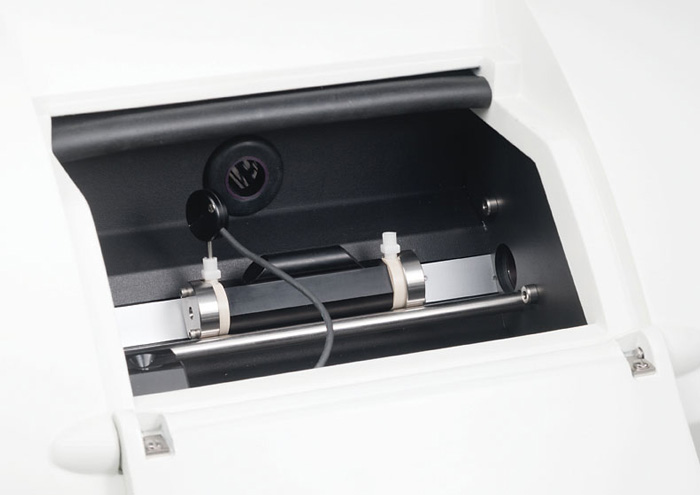Choosing a Saccharimeter Cell and a Calibration Standard
Many options are available for Rudolph Research Saccharimeters to assist you with temperature control, sample handling, and calibration.
Temperature

All Autopol® Saccharimeters come with a Temperature Probe so that sample temperature can be displayed and printed. The temperature probe is built into the sample compartment and can be inserted into the polarimeter cell.
Automation and Continuous Sampling

Cells are available in 25mm, 50mm, 100mm and 200mm optical pathlengths with necessary fittings for any application.
Pour In Sampling with Temperature Correction

Cells with stainless steel funnels and exit tubing available in 50mm, 100mm and 200mm optical pathlengths.
TempTrol™ Quartz Plates
TempTrol™ Quartz Plates allow for temperature control and correction in TempTrol™ Autopol 880 Saccharimeters. Standard Quartz Plates allow for temperature correction only.

TempTrol™ Solutions for High Accuracy, Low Volume Laboratories
Autopol 880T Saccharimeter

61T Cells with TempTrol™

Rudolph 61T style cells allow for Electronic Temperature Control to a defined set temperature (i.e. 20°C or 27.5°C).
TempTrol™ Solution
Patented TempTrol™ Technology eliminates the need for a water bath.
TempTrol™ heating and cooling transfer surface
TempTrol™ cell with mating heating and cooling transfer surface
Place the TempTrol™ cell in your TempTrol™ equipped Autopol® 880T Saccharimeter sample chamber to measure to within ±0.2°C of the ICUMSA specified temperature (normally 20°C or 27.5°C). Any temperature between 15°C and 35°C may be selected.
Rudolph provides a temperature validation cell with every TempTrol™ system. The temperature validation cell along with an optional NIST traceable thermometer is designed to validate the temperature control performance of the saccharimeter and cell to ±0.2°C.
Temperature is selected via touch screen.
Purity Software Definitions
The AUTOPOL® models 589, 880 and 880T always display Purity as if it were reading a 1 normal solution as defined in SPS-1: 3.1 The “normal sugar solution” is defined as 26.0160 g of pure sucrose weighed in vacuo and dissolved in water at 20.00°C to a final volume to 100.000 cm3. This corresponds to 26.000 g weighed in air under normal conditions (1013 mbar, 20°C, 50% relative humidity) and dissolved in water to a final volume of 100.000 cm3. Therefore, Rudolph displays:
% Sucrose = °Z reading corrected for dilution
Example: a 1/4 normal wt. solution reading 13.70°Z will read (4 x 13.70°Z) 54.80% Sucrose.
%RDS-OP = Refractometer dissolved solids or Brix prior to dilution
Example: a 3:1 dilution having a refractometer Brix reading of 14.30 would read 42.90 %RDS-OP (14.30 Brix x 3)
%PURITY = %Sucrose x 100 x apparent density polynomial, %RDS-OP
Purity Software Documentation



